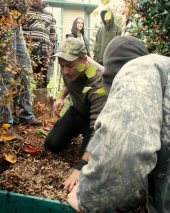Jacqueline,
Your timing in coming to the forum couldn't be more perfect. We are committed to starting some bee colonies on our property. I've been in a beginners class. I've attended a local beekeepers association meeting, watched videos, and read a few books. It seems like one thing has been consistent. Everyone of them says "If you ask ten beekeepers how to do something you will get 11 answers."
This makes it difficult for a beginner to know where to start. I have a colleague that I communicate with that keeps reminding me that you need to learn from the bees... but since we don't have them yet, it's kinda difficult. I know that there are many things that I have tried in Permaculture, that I can do differently if it doesn't work out. When it comes to animals (as it is with the bees) I know that they depend on me to do things for them. I am torn by all of the noise of ideas out there, and afraid that what I might do, might not be the right thing. Here in Pennsylvania, we are seeing over 30% hive failure annually. I am just trying to be the best stewards of these creatures, and really struggling with finding the right path to start.
Thank You for any suggestion you may offer...
-Brian




